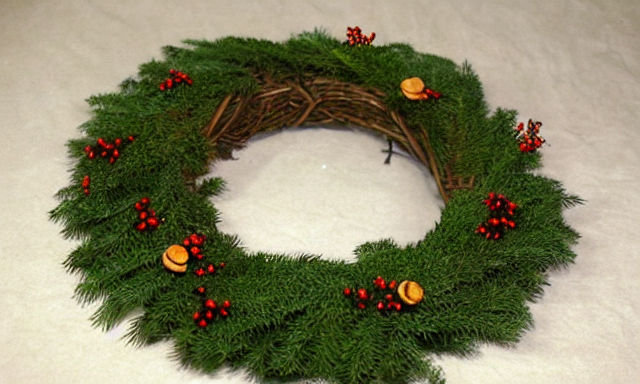List of Mabon Foods
The list of traditional food eaten during Mabon is long and varied. Read on for recipes, traditions, and symbolism. It is the perfect time to get into nature and enjoy autumn’s bounty. Whether you live in the countryside or a sprawling city, autumn is full of treasures. From the changing colors of the leaves to the early frost, there’s something to delight everyone.
When you make a purchase through links on our site, we may earn an affiliate commission. As an Amazon Associate I earn from qualifying purchases..

Traditions
The feast day of Mabon is one of the ancient festivals of the autumnal equinox, and is also called Feast of the Ingathering. The celebration is often centered on the balance between light and dark and a time to express gratitude for the harvest of the year. In many traditions, people will gather around a food altar at Mabon to celebrate the harvest, and many will eat a variety of foods associated with this festival.
The traditional foods for the feast of Mabon include goose and St. Michael’s bannocks. In the Yoruba culture, yams are eaten during this time of the year. In the United States, the Iroquois hold a corn dance in honor of the ripe grains. In some areas, Wiccans and Pagans will decorate their altars with seasonal colors and light bonfires at night. Some will observe autumn constellations in the evening sky.
Apples are also traditionally eaten on Mabon. They are connected to the elements of Earth and Water, and are considered sacred by the goddesses Aphrodite and Freya. They also symbolize immortality. Apples are also used for cleansing, and apple leaves are added to cleansing fall incense blends.
There are many ways to incorporate mulling into your food and drink at Mabon. It’s a great way to share your gratitude and intention into your dishes. Incorporate a few traditional ingredients into your recipes, and you’ll have a magical celebration. And if you don’t feel like cooking, mulling is easy to make with a crockpot. And it’s one of the simplest ways to add some magick to your food and drink.
Mabon is an ancient pagan festival celebrated on the first day of autumn. It was originally observed by the Celts, who lived in northwest Europe and Britain before the Romans arrived. This celebration involved fires, feasting, sacrifices, and other activities centered around the earth’s cycles.
Herbalists and wildcrafters will find that this is a magical time of year for herbs and tea recipes. Moreover, autumn has specific imagery for herbalists and foragers, and can be the ideal time to harvest root vegetables and herbs.
Recipes
There are a variety of Mabon food recipes that can be made during this Pagan holiday. Typically, food preparation revolves around seasonal foods, like squash and apple soup. Squash is a particularly good choice for this holiday, and Betty Crocker’s recipe for acorn squash and apple soup is easy to make and delicious.
Roasted cauliflower is another wonderful choice for a Mabon feast. To make this dish, simply coat the vegetables with olive oil and sprinkle with your favorite spices. Then, roast them in the oven at 400 degrees F for 30 to 40 minutes. Once cooked, you can eat them plain, or top them with cinnamon and nutmeg.
A number of herbs are also appropriate for Mabon celebrations. Sage and marigold, as well as ivy, can be used to make dishes for this holiday. Herbs such as orris root, thistle, and passionflower are also good choices. Garlic and dried seeds are also appropriate for this occasion. Grains are also important, especially pumpernickle and dark rye.
Autumnal colours are ideal for a Mabon ritual. Depending on the location, you can also use fall incense to fill the space. This ritual will allow you to set your intentions for the coming season. It can be held outdoors or indoors. During the ceremony, you can combine the elements of a Pagan ritual with fall-themed foods and decorations.
If you’re an active kitchen witch, you can invite friends and family to celebrate Mabon with you. Serve them with food that is prepared with love and intention. Using fresh flowers and candles is also a great way to create a welcoming atmosphere. At the meal, have everyone take turns saying what they are grateful for and what they hope to achieve during the coming year. For those who don’t have the time to host a full-blown celebration, the Members’ Library has a free Mabon planner you can print out and keep close to your heart.
Origins
The Origins of Mabon food can be traced back to the Celtic people who lived in the northern part of Europe and Ireland. These people worshipped a god called Mabon, the son of the Earth Mother Goddess. This holiday is a time to celebrate harvest and the first fruit of the year. It is also the start of deer hunting season in many areas.
The food served at Mabon is associated with the harvest. Many fruits, nuts, vegetables, and grains are associated with this festival. Some people also serve desserts on this holiday. Apples, berries, mashed potatoes, corn, and seeds are common Mabon desserts. Wine and other drinks are appropriate during this time.
While modern Pagans began celebrating Mabon in the 1970s, it has its roots in ancient Celtic culture. Its celebration began as a harvest festival. It takes its name from the Celtic fertility god Mabon ap Modron. According to the tradition, the god Mabon was the son of the Welsh goddess Dea Matrona. In pagan times, Mabon was celebrated as the second harvest of the year. This corresponds to the time when crops were ready for harvest.
The Autumn Equinox, or Mabon, is a time of balance, equality, and harmony. Farms and orchards harvest their fall crops on this day. This is one of two days in the year when the periods of light and darkness are perfectly balanced. This is an important time to celebrate the harvest season, as the days become shorter. In addition, it is a time to give thanks to Mother Earth and reflect on the wheel of the year.
Symbolism
The symbolism of food on the Mabon holiday is a multifaceted one. While the holiday celebrates the beginning of the harvest and is closely associated with the Celtic gods, many people have different interpretations of the holiday. For some, this holiday has more to do with the masculine side of the harvest than with the feminine. For others, it represents the start of the deer hunting season.
Mid-autumn vegetables and fruit are important foods to eat at Mabon. They symbolize the fruits of the earth and the moon, and are linked to the elements of earth and water. They are also sacred to the goddesses Aphrodite and Freya. They are also symbolic of love, immortality, and balance. They have many health benefits, and are often used to support regularity. They also contain pectin, which contributes to healthy cholesterol levels.
In many cultures, the symbolism of food on Mabon is rooted in the harvest and gratitude. It is a time when harvesting is celebrated and people give back their produce to neighbors, as well as store it away for the winter. Symbols of Mabon food include apples, which are a common symbol of the celebration. They are used in a variety of ways, including pies, baked goods, and bread.
Several herbs and botanicals are also popular. Acorns, wheat, and pumpkins are among the most popular. The season is also a time when herbs and spices are used for rituals. Some people use medicinal plants such as cinnamon to stay grounded. Others use nutmeg to enhance their immune system.
Apples are especially symbolic of autumn, and the tree itself is associated with wisdom. During the autumn season, apple orchards are abundant, and apple picking is a fun way to connect with local agriculture and nature. It is also a great time to give thanks to the earth and the plants growing around you. Some people even make cider or snack foods out of the apples they pick.
Mabon is an important harvest festival for the Pagan religion. Many people use the holiday as a time for giving thanks. This is why many Pagans set up a special altar with harvest foods on the holiday.

















